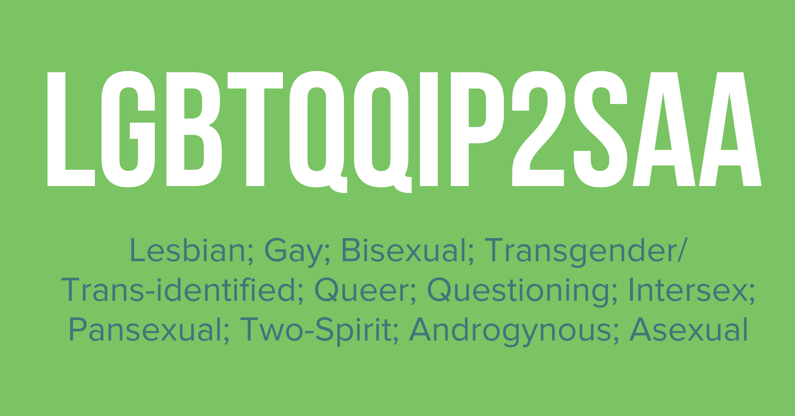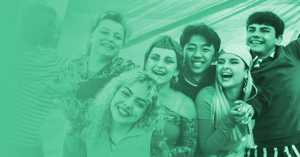We here at ZayZoon are passionate about financial wellness. At the core, our mission is to bring financial wellness to people directly through both Earned Wage Access and ZayU, our financial literacy platform.
But it’s important to note that finances, and financial stress, don’t necessarily look the same for everyone. There are many important and intersecting factors to consider, such as socioeconomic status, race, gender/gender identity, sexual orientation, dis/ability status, and more.
Today, for Pride Month, we’re going to dig into the financial realities of being LGBT+ and how we can think about this intersection more critically.
First: What does it mean to be LGBT+?
LGBT+ is an acronym that stands for the lesbian, gay, bisexual, and transgender/trans-identified communities.

However, in recent years, this acronym has been expanded to be more inclusive of additional groups within the community – for example, LGBTQQIP2SAA adds letters for Q (queer – which may include non-binary, gender fluid, genderqueer, or gender non-conforming), Q (questioning), I (intersex), P (pansexual), 2S (two-spirit), A (androgynous), and A (asexual). Members of any of these groups are considered to be a part of the LGBT+ community as a whole.
What financial considerations need to be made when it comes to someone’s LGBT+ identity?
There are many additional considerations that come into play for members of the LGBT+ community – things that many people may never even consider.
- Depending on the country, transgender/trans-identified folx may be left with massive expenses in terms of affording their gender-affirming surgeries. Such costs can rapidly add up.
- Another example is that, for couples where both partners identify as womxn, the wage gap comes into play. In a 2015 paper from The Williams Institute, the authors observe:
- Additionally, for LGBT+ people of colour, they face additional financial discrimination on account of a wage gap based on race as well.
- On another note, family planning becomes a consideration for LGBT+ couples. Investopedia summarizes:
- “There are many options for an LGBTQ+ person to start a family — including adoption, in vitro fertilization (IVF), surrogacy, and artificial insemination — all of which cost money.”
- That same article mentions how, on average, in America, members of the LGBT+ community carry $16,000 more student loan debt than their peers. It’s noted that this may have something to do with parents not wanting to fund the education of their LGBT+ children.
As you can see, there are many considerations that the LGBT+ community faces financially that may not occur to cisgender/straight folx.
What other issues are affecting the LGBT+ community that, in turn, affect finances?
Other issues that impact the LGBT+ community at higher rates include things like homelessness and mental health issues.
According to Youth.gov, LGBT+ youth in particular “are significantly overrepresented in homeless populations compared with the general population.” (This may have something to do with LGBT+ folx being disowned by their families upon coming out.) And rates of homelessness indicate massive financial difficulties.
Members of the LGBT+ are also disproportionately affected by mental health issues; in particular, transgender and bisexual folx see this the most. Factors that lead to this include discrimination. Treatment for mental health issues can be extremely costly, meaning that is yet another massive expense LGBT+ folx have to face at higher levels.
What kind of organizations can someone support to help the LGBT+ community?
All of this may seem upsetting (and it is), but it’s important to remember that awareness is the first step in trying to solve a problem. That’s why we hope this article might open some people’s eyes to considerations and issues facing the LGBT+ community that they may have never even considered.
In terms of practical action steps, there are many organizations doing important work that individuals and companies can opt to support to make a difference in the lives of LGBT+ folx.
Some options include:
- The Trevor Project, an international suicide prevention & crisis intervention organization for the LGBT+ youth community, aimed at saving young queer lives
- True Colors United, an organization tackling LGBT+ homelessness
- Center for Black Equity, a charity focused on improving the lives of black LGBT+ folx across the globe
- Out & Equal, an organization focused on LGBT+ workplace equality
And in Canada, options include:
- The 519, a community center based in Toronto for LGBT+ folx to find support – everything from refugee settlement to counseling
- LGBT Youth Line, a queer-informed peer-support helpline
***







